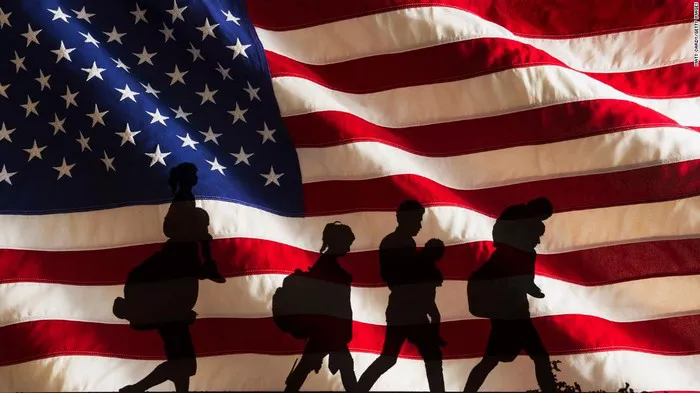In recent years, immigration policy has become a focal point of political debate, public discourse, and legal scrutiny. From border security to pathways to citizenship, the landscape of immigration policy is vast, intricate, and subject to ongoing change. As nations grapple with demographic shifts, economic imperatives, and humanitarian concerns, the development and implementation of immigration policy emerge as critical endeavors shaping societies worldwide. In this article, we delve into the current state of immigration policy, examining its key components, controversies, and implications.
Overview of Immigration Policy
At its core, immigration policy encompasses a set of laws, regulations, and administrative measures governing the movement of people across national borders. These policies dictate who can enter a country, under what circumstances, and for what purposes. Immigration policies typically address a range of issues, including visa issuance, border control, refugee resettlement, family reunification, employment-based migration, and deportation procedures.
The United States: A Case Study
As one of the world’s largest immigrant-receiving nations, the United States provides a compelling case study of immigration policy in action. Historically, U.S. immigration policy has evolved in response to changing geopolitical dynamics, economic conditions, and societal attitudes. The current framework is shaped by a complex interplay of federal laws, executive actions, court rulings, and administrative directives.
Border Security and Enforcement
Border security and enforcement represent foundational pillars of U.S. immigration policy. The Department of Homeland Security (DHS), particularly through its agencies such as Customs and Border Protection (CBP) and Immigration and Customs Enforcement (ICE), is responsible for safeguarding the nation’s borders and enforcing immigration laws. Measures range from physical barriers and surveillance technologies to apprehension and removal of undocumented immigrants.
Legal Immigration Channels
Alongside enforcement measures, the U.S. maintains various legal channels for immigration. These include family-based immigration, employment-based immigration, diversity visa programs, and humanitarian pathways such as asylum and refugee resettlement. Each avenue is governed by specific eligibility criteria, numerical caps, and procedural requirements, with the aim of facilitating lawful migration while safeguarding national interests.
Pathways to Citizenship
Central to debates over immigration policy is the question of citizenship. For many immigrants, attaining citizenship represents a long-term goal, offering access to rights, benefits, and full participation in society. The naturalization process in the U.S. entails meeting residency, language, and civics requirements, along with demonstrating good moral character. However, eligibility criteria and pathways to citizenship have been subject to legislative reforms and executive actions over time.
Deferred Action and Temporary Protected Status
In addition to traditional immigration pathways, the U.S. has implemented programs providing temporary relief from deportation for certain undocumented immigrants. Deferred Action for Childhood Arrivals (DACA), introduced in 2012, offers protection and work authorization to individuals brought to the country as children. Similarly, Temporary Protected Status (TPS) grants temporary residency to nationals of designated countries facing armed conflict, natural disasters, or other humanitarian crises.
Controversies and Challenges
Despite the multifaceted nature of immigration policy, it remains a deeply contentious issue characterized by divergent perspectives, competing interests, and moral dilemmas. Controversies abound, ranging from concerns over national security and economic impact to questions of humanitarianism and human rights. Debates over immigration policy often intersect with broader issues of identity, culture, and social cohesion, reflecting deep-seated anxieties and aspirations within society.
Political Polarization and Policy Gridlock
In many countries, including the U.S., political polarization has profoundly influenced the formulation and implementation of immigration policy. Partisan divisions over issues such as border security, legalization pathways, and refugee resettlement have hindered legislative progress and contributed to policy gridlock. Efforts to enact comprehensive immigration reform have repeatedly faltered, leaving key issues unresolved and exacerbating societal tensions.
Humanitarian Concerns and Refugee Protection
Humanitarian imperatives represent a critical dimension of immigration policy, particularly in light of global displacement crises and refugee flows. Balancing national security interests with obligations to provide refuge to those fleeing persecution or violence poses ethical and practical challenges for policymakers. Debates over refugee resettlement, asylum processing, and international cooperation underscore the complex interplay between humanitarianism and sovereignty.
Economic Considerations and Labor Dynamics
Economic factors loom large in discussions surrounding immigration policy, with proponents highlighting the contributions of immigrants to labor markets, entrepreneurship, and economic growth. However, concerns about job competition, wage depression, and fiscal impacts persist, fueling calls for stricter immigration controls and selective admission criteria. The nexus between immigration policy and economic outcomes remains a subject of empirical research and political contention.
Globalization and Transnational Mobility
In an era of globalization, immigration policy is increasingly influenced by transnational dynamics, interconnected economies, and cross-border flows of people, goods, and ideas. The rise of global supply chains, digital technologies, and diaspora networks has reshaped patterns of migration and challenged traditional notions of sovereignty and territoriality. Addressing the implications of transnational mobility requires adaptive and collaborative approaches at the national, regional, and international levels.
Future Directions and Policy Innovation
Looking ahead, the trajectory of immigration policy is likely to be shaped by a confluence of geopolitical, economic, and social factors. Demographic shifts, climate change, technological advancements, and geopolitical instability will continue to impact migration patterns and policy responses. As societies grapple with the complexities of immigration, opportunities exist for policy innovation, evidence-based decision-making, and inclusive dialogue aimed at fostering more equitable and humane systems of migration governance.
Conclusion
Immigration policy remains a dynamic and contested terrain, reflecting the complex interplay of interests, values, and forces shaping contemporary societies. From border security and legal pathways to citizenship and humanitarian protection, the current landscape of immigration policy encompasses a diverse array of issues with far-reaching implications. Navigating these complexities requires informed dialogue, principled leadership, and a commitment to upholding human dignity and justice in the face of profound global challenges.


